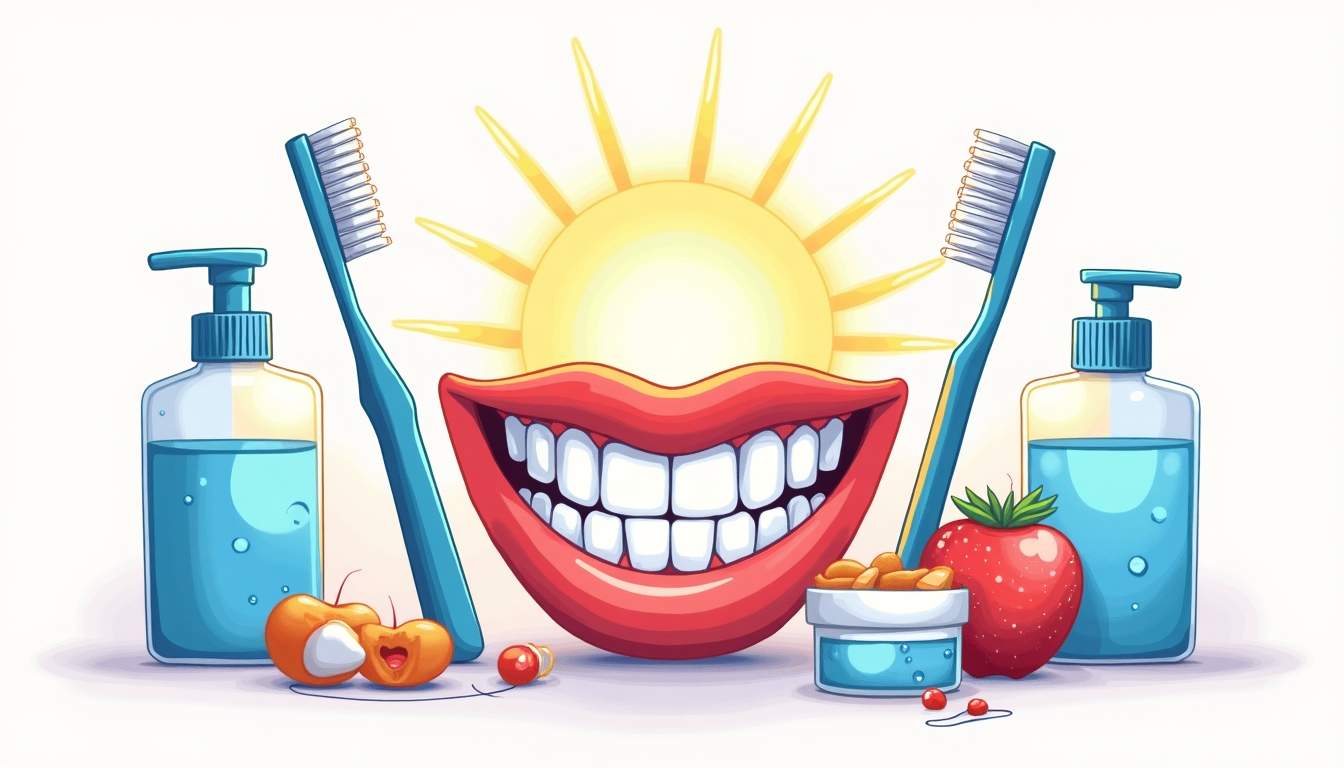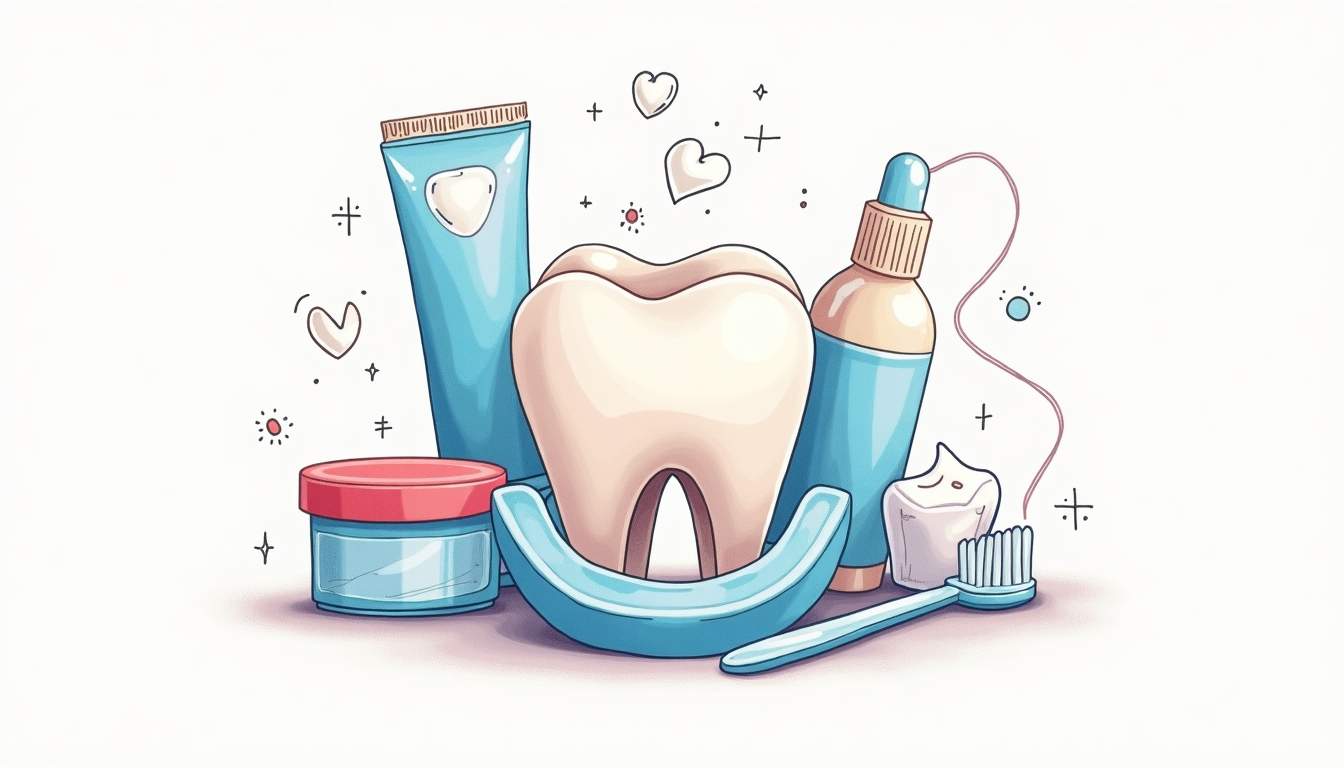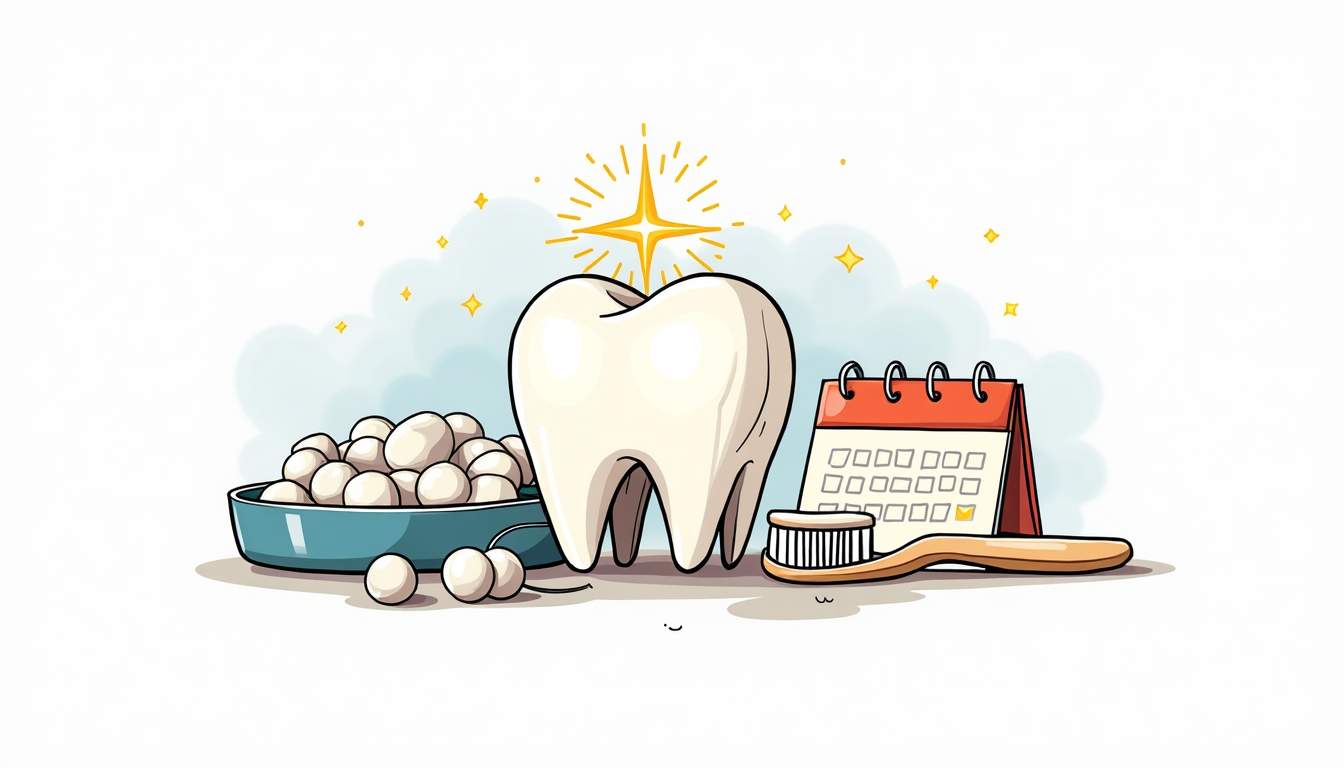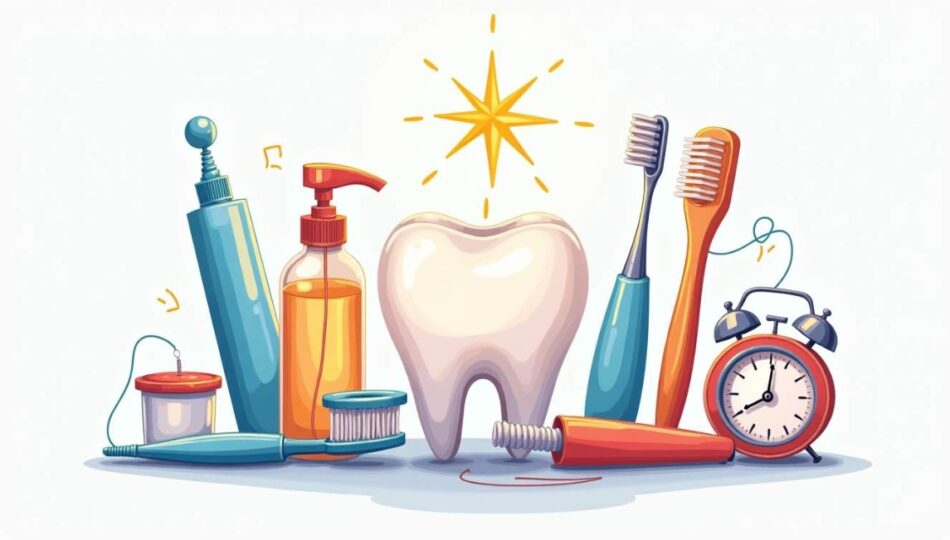Bright, straight teeth can transform a smile and boost confidence. But achieving that perfect look is just the beginning. What comes next-how you care for your teeth after whitening or orthodontic treatment-makes all the difference in keeping your smile healthy and radiant for years to come.
Understanding the Sensitivity After Whitening
Teeth whitening treatments, whether done professionally or at home, often leave your teeth feeling sensitive. This sensitivity is usually temporary but can be uncomfortable. Whitening agents work by penetrating the enamel to break down stains, which can irritate the nerves inside your teeth.
It’s common to experience heightened sensitivity to hot, cold, or sweet foods and drinks for a few days after treatment. This doesn’t mean something is wrong—it’s just a sign that your teeth are adjusting. However, managing this sensitivity properly is key to protecting your enamel and avoiding discomfort. It’s important to remember that the degree of sensitivity can vary from person to person, depending on factors such as the type of whitening method used, the concentration of the whitening agent, and individual dental health. For some, this sensitivity may be minimal, while others might experience a more pronounced reaction, especially if they have pre-existing dental issues. For professional care and long-lasting results, consider visiting Indental Castle Hill for expert teeth whitening norwest services.
Tips to Manage Sensitivity
Start by using toothpaste formulated specifically for sensitive teeth. These products contain ingredients that help block the transmission of sensation from the tooth surface to the nerve. Avoid brushing aggressively; instead, use a soft-bristled toothbrush and gentle strokes to prevent further enamel wear. Additionally, incorporating fluoride mouth rinses into your oral care routine can help strengthen enamel and reduce sensitivity over time, providing an extra layer of protection after whitening treatments.
For the first 48 hours post-whitening, steer clear of extremely hot or cold beverages and foods. Also, acidic drinks like citrus juices or soda can exacerbate sensitivity and weaken enamel, so it’s best to avoid them during this period. Instead, opt for lukewarm beverages and soft foods that are less likely to trigger discomfort. Staying hydrated with water can also help, as it promotes saliva production, which naturally protects your teeth. If sensitivity persists beyond a few days, consider consulting your dentist, as they may recommend additional treatments or adjustments to your whitening regimen to ensure your comfort and dental health.
Maintaining Your Bright Smile
After whitening, your teeth are more porous and prone to staining. This means that habits you had before whitening could quickly dull your results if you’re not careful. Stains from coffee, tea, red wine, and tobacco can settle in more easily right after treatment.

Smart Lifestyle Choices
To keep your smile shining, rinse your mouth with water after consuming staining foods or drinks. This simple step helps wash away pigments before they settle into your enamel. Drinking through a straw can also minimize contact between staining liquids and your teeth. Additionally, consider incorporating more crunchy fruits and vegetables into your diet, such as apples and carrots. These foods can act as natural toothbrushes, helping to scrub away surface stains while also providing essential nutrients for your overall health.
Regular dental cleanings are crucial. Professional cleanings remove surface stains and plaque buildup that brushing alone can’t reach. Your dentist may recommend touch-up whitening sessions every six months to a year, depending on your lifestyle and how your teeth respond. It’s also beneficial to maintain a consistent oral hygiene routine at home, which includes brushing twice a day with a fluoride toothpaste and flossing daily. This not only helps to keep your teeth white but also promotes gum health, which is essential for a beautiful smile. Furthermore, consider using a whitening toothpaste or mouthwash that can help maintain your results between professional treatments, giving you an extra boost in your quest for a dazzling smile.
Orthodontic Treatment: The Journey Doesn’t End with Braces Off
Getting your braces or aligners removed is a huge milestone. But the end of active orthodontic treatment is just the start of a new phase—maintaining the alignment and health of your teeth. Without proper care, teeth can shift back to their original positions, undoing all the hard work.
Wearing Retainers Consistently
Retainers are the frontline defense against relapse. Whether you have fixed or removable retainers, wearing them as prescribed by your orthodontist is non-negotiable. Skipping retainer wear, even occasionally, can allow teeth to drift, especially in the first few months after braces come off.
Removable retainers should be cleaned regularly to prevent plaque buildup and bad odors. Use a soft toothbrush and mild soap or a specialized retainer cleaner. Avoid hot water, which can warp the plastic. It’s also wise to keep your retainer in a protective case when not in use, as this prevents accidental damage or loss. Many patients find it helpful to set reminders on their phones to ensure they wear their retainers consistently, especially during the initial adjustment period.
Oral Hygiene with Orthodontic Appliances
During orthodontic treatment, maintaining excellent oral hygiene is a challenge but absolutely necessary. Brackets and wires trap food particles, increasing the risk of cavities and gum disease. After treatment, your gums and enamel need time to recover.
Continue brushing at least twice a day with fluoride toothpaste and floss daily. Interdental brushes or water flossers can help clean around any fixed retainers or tricky spots. Regular dental checkups will monitor your oral health and catch any issues early. Additionally, consider incorporating an antibacterial mouthwash into your routine to further reduce plaque and promote gum health. This extra step can be particularly beneficial in the months following the removal of braces, as your mouth adjusts to the absence of orthodontic appliances and your gums regain their strength.
It’s also important to be mindful of your diet post-treatment. While the temptation to indulge in hard or sticky foods may arise, it’s crucial to maintain a balanced diet that supports oral health. Foods rich in calcium and vitamin D can strengthen your teeth and bones, while avoiding sugary snacks can help prevent cavities. Hydration is equally important; drinking plenty of water not only keeps your mouth moist but also helps wash away food particles and bacteria, contributing to overall oral hygiene.
Protecting Your Teeth from Damage and Discoloration
Both whitening and orthodontic treatments can leave your teeth more vulnerable in the short term. Protecting them from damage and discoloration requires a mindful approach to daily habits.

Watch What You Eat and Drink
Sticky, hard, or sugary foods can cause damage or promote decay, especially when your teeth are in a sensitive state. After whitening, avoid foods like caramel, gummy candies, and popcorn kernels that can get stuck or chip enamel. After orthodontic treatment, these foods can damage retainers or cause teeth to shift.
Limit acidic foods and drinks, which erode enamel and make teeth more prone to staining. If you do indulge, rinse your mouth with water afterward and wait at least 30 minutes before brushing to avoid brushing softened enamel.
Avoid Tobacco and Limit Staining Substances
Tobacco use is one of the biggest culprits in staining teeth and damaging gums. It also slows healing after dental treatments. Quitting smoking or using tobacco products can significantly improve the longevity of your whitening results and the health of your gums post-orthodontics.
Similarly, coffee, tea, and red wine are known to stain teeth. Enjoy them in moderation and consider rinsing or brushing soon after consumption.
Regular Dental Visits: Your Best Defense
Whether you’ve just completed whitening or orthodontic treatment, regular dental visits are essential. Professional cleanings, exams, and consultations help maintain your smile’s health and appearance.
During these visits, your dentist can assess how well your teeth are responding to treatment, identify any early signs of decay or gum disease, and provide personalized advice on care. They can also perform maintenance whitening or adjust retainers as needed.
What to Expect at Follow-Up Visits
Dental professionals will check for any enamel wear, sensitivity issues, or gum inflammation. They may recommend fluoride treatments or desensitizing agents to strengthen your teeth. For orthodontic patients, retainer fit and tooth alignment will be evaluated to ensure stability.
Don’t hesitate to discuss any concerns you have, whether it’s sensitivity, discomfort, or questions about your oral hygiene routine. Open communication with your dental team ensures your smile stays healthy and beautiful.
At-Home Care: Building a Routine That Works
Consistency is key when it comes to caring for your teeth after whitening or orthodontic treatment. Establishing a simple, effective oral care routine can make all the difference.

Daily Habits to Embrace
Brush twice a day with a fluoride toothpaste designed for your specific needs-whether that’s sensitivity relief or enamel strengthening. Floss daily to remove plaque and food particles between teeth. If you have a fixed retainer, use floss threaders or water flossers to clean underneath it.
Drink plenty of water throughout the day to keep your mouth hydrated and help wash away food debris. Chewing sugar-free gum after meals can stimulate saliva production, which naturally protects teeth.
When to Use Whitening Products Again
Overusing whitening products can damage enamel and increase sensitivity. Follow your dentist’s recommendations on how often to touch up your whitening. Usually, this means waiting several months between treatments to allow your teeth to recover fully.
If you notice increased sensitivity or uneven whitening, consult your dental professional before using any products again. They can suggest safer alternatives or in-office treatments tailored to your needs.
Summary: Protecting Your Investment in a Healthy Smile
Whitening and orthodontic treatments are investments in your appearance and oral health. Caring for your teeth afterward ensures that investment pays off with a lasting, stunning smile.
Managing sensitivity, maintaining good oral hygiene, protecting against stains and damage, and keeping up with dental visits all contribute to long-term success. Remember, your smile is a reflection of your overall health, so treat it with the care it deserves.
With the right habits and professional support, your bright, straight teeth will stay that way-ready to light up every room you enter.







